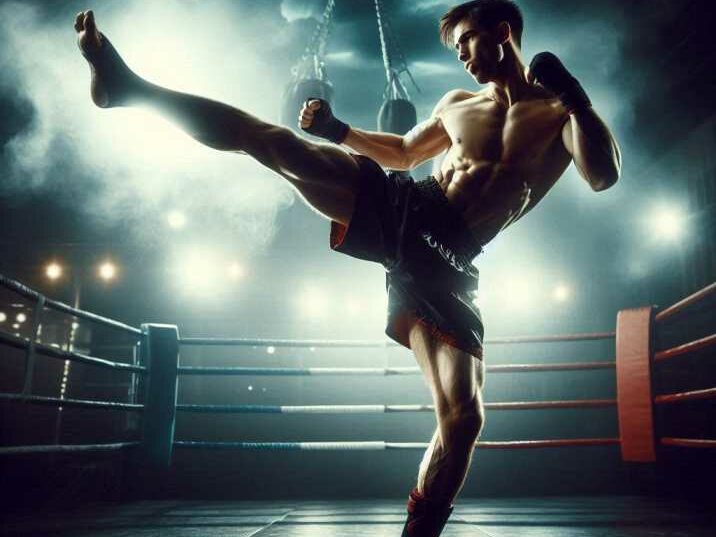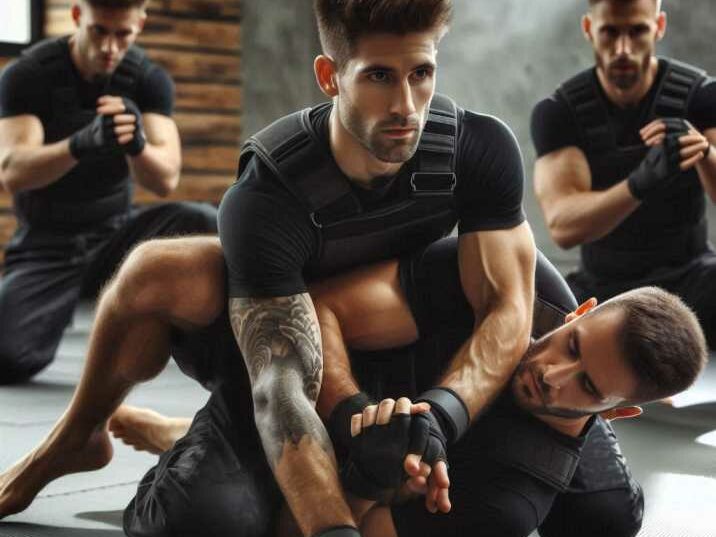Introduction
Table of Contents
Have you ever wondered what makes some martial arts look so powerful and intense? Aggressive martial arts are styles that focus on strong, forceful techniques to defeat an opponent. They use speed, strength, and energy to overpower and control others. These martial arts are exciting to watch and even more thrilling to learn! In this article, we’ll explore different types of aggressive martial arts, their unique features, and how they are used worldwide.
What Makes a Martial Art Aggressive?
Speed and Power
Aggressive martial arts emphasize speed and power in their techniques. Here’s why these elements are crucial:
- Speed: Being fast allows practitioners to deliver strikes before the opponent can react. Quick movements can surprise an opponent and give the martial artist an advantage in a fight. Speed helps in executing techniques rapidly, making it difficult for the opponent to defend or counter-attack.
- Power: Powerful strikes can end a confrontation quickly by causing significant impact. Martial artists develop power through techniques like punching, kicking, and other striking methods. Power is generated by using the whole body efficiently, combining strength and momentum to deliver effective blows.
Offensive Techniques
Aggressive martial arts focus heavily on offensive techniques. This means that the practitioner takes the initiative in a confrontation. Here’s how it works:
- Attacking First: Rather than waiting to respond to an opponent’s actions, aggressive martial artists aim to strike first. This proactive approach can destabilize the opponent and put them on the defensive.
- Variety of Attacks: These martial arts teach a wide range of attacks, including punches, kicks, elbow strikes, and knee strikes. This diversity allows practitioners to adapt and attack from different angles.
- Continuous Pressure: Aggressive styles often involve maintaining pressure on the opponent, not giving them a chance to recover or counter-attack. This can overwhelm the opponent and force them into a defensive position.
Mental Toughness
Practitioners of aggressive martial arts develop mental toughness, which is vital for both training and real-life situations:
- Confidence: Training in aggressive martial arts builds self-confidence. Practitioners learn to trust their abilities and instincts, which is crucial in high-pressure situations.
- Decisiveness: Making quick decisions is essential in combat. Aggressive martial arts teach practitioners to assess situations rapidly and choose the best course of action.
- Resilience: Overcoming challenges in training, such as intense sparring sessions or tough conditioning drills, helps build resilience. Practitioners learn to push through physical and mental barriers.
Physical Conditioning
Training in aggressive martial arts involves rigorous physical conditioning to prepare the body for the demands of combat:
- Strength: Building muscle strength is essential for delivering powerful strikes and controlling opponents. Strength training can include exercises like weightlifting, bodyweight exercises, and resistance training.
- Agility: Agility training helps practitioners move quickly and change directions efficiently. This is important for dodging attacks and positioning oneself for strikes.
- Endurance: Having good endurance allows martial artists to sustain high levels of activity during a fight or training session. Endurance training often includes cardiovascular exercises like running, jumping rope, and circuit training.
Types of Aggressive Martial Arts
There are many forms of aggressive martial arts. Here are some of the most well-known styles:
Muay Thai
Muay Thai, often called the “Art of Eight Limbs,” is a martial art from Thailand. It uses punches, kicks, elbows, and knees, making it a powerful striking art.

- History: Developed in Thailand over centuries, Muay Thai is a national sport.
- Techniques: Includes striking with fists, elbows, knees, and shins.
- Training: Involves rigorous conditioning, sparring, and pad work.
- Benefits: Improves fitness, self-defense skills, and mental toughness.
Brazilian Jiu-Jitsu
While primarily a grappling art, Brazilian Jiu-Jitsu (BJJ) can be aggressive when used to control and submit opponents on the ground.
- History: Originated in Brazil, adapted from Japanese Jiu-Jitsu.
- Techniques: Focuses on ground fighting and submissions like joint locks and chokes.
- Training: Includes drilling techniques, rolling (sparring), and physical conditioning.
- Benefits: Enhances problem-solving skills, flexibility, and confidence.
Karate
Karate is a Japanese martial art known for its powerful strikes and disciplined training.
- History: Developed in Okinawa, Japan, as a form of self-defense.
- Techniques: Emphasizes punches, kicks, and open-hand strikes.
- Training: Combines kata (forms), kumite (sparring), and kihon (basics).
- Benefits: Builds character, respect, and self-discipline.
Taekwondo
Taekwondo is a Korean martial art famous for its high-flying kicks and fast-paced action.
- History: Created in Korea in the 1940s and 1950s, now an Olympic sport.
- Techniques: Focuses on kicking, striking, and blocking.
- Training: Includes patterns (forms), sparring, and breaking techniques.
- Benefits: Improves agility, balance, and coordination.
Krav Maga
Krav Maga is an aggressive martial art developed for the Israeli military, focusing on real-world self-defense.

- History: Developed by Imi Lichtenfeld for the Israeli Defense Forces.
- Techniques: Utilizes strikes, throws, and grappling for self-defense.
- Training: Involves realistic scenarios, stress drills, and sparring.
- Benefits: Enhances situational awareness, confidence, and fitness.
Key Elements of Aggressive Martial Arts
Aggressive martial arts share some common features that make them effective and exciting. Here are the key elements:
Striking Techniques
Striking is a primary aspect of many aggressive martial arts. These techniques involve using various parts of the body to hit an opponent, including:
- Punches: Fast and powerful blows with the fists.
- Kicks: High and low strikes using the legs.
- Elbows: Sharp, close-range strikes.
- Knees: Strong strikes often used in clinch fighting.
Grappling and Ground Control
Some aggressive martial arts focus on grappling, controlling opponents on the ground, and using submissions:
- Takedowns: Techniques to bring opponents to the ground.
- Joint Locks: Techniques to control or submit an opponent by manipulating joints.
- Chokes: Methods to restrict airflow, forcing an opponent to submit.
Mental and Physical Conditioning
Training in aggressive martial arts requires developing both the body and the mind:
- Strength and Endurance: Building muscles and stamina to perform techniques effectively.
- Agility and Speed: Moving quickly and efficiently to outmaneuver opponents.
- Focus and Discipline: Cultivating mental toughness and concentration.
Benefits of Practicing Aggressive Martial Arts
Practicing aggressive martial arts offers numerous benefits beyond self-defense:
- Physical Fitness: Improves cardiovascular health, strength, and flexibility.
- Self-Confidence: Builds self-esteem and confidence through skill development.
- Discipline and Respect: Teaches respect for others and self-discipline.
- Stress Relief: Provides a healthy outlet for stress and aggression.
How to Choose the Right Martial Art for You
Choosing the right martial art depends on your interests and goals. Here are some factors to consider:
- Purpose: Are you interested in self-defense, competition, or fitness?
- Style: Do you prefer striking, grappling, or a mix of both?
- Training Environment: Look for a school or gym that provides a positive and supportive atmosphere.
- Instructor: A good instructor should be knowledgeable, patient, and encouraging.
Comparing Aggressive Martial Arts
Here’s a comparison table of some popular aggressive martial arts:
| Martial Art | Country of Origin | Key Techniques | Focus |
|---|---|---|---|
| Muay Thai | Thailand | Strikes with fists, elbows, knees, shins | Striking |
| Brazilian Jiu-Jitsu | Brazil | Ground fighting, submissions | Grappling |
| Karate | Japan | Punches, kicks, open-hand strikes | Striking |
| Taekwondo | Korea | Kicking techniques | Striking |
| Krav Maga | Israel | Real-world self-defense | Mixed techniques |
Conclusion
Aggressive martial arts offer an exciting and dynamic way to learn self-defense, improve fitness, and build confidence. Whether you choose Muay Thai, Brazilian Jiu-Jitsu, Karate, Taekwondo, or Krav Maga, you’ll gain valuable skills and enjoy the journey of personal growth. Remember, martial arts are not just about fighting but also about respect, discipline, and self-improvement.
FAQs
- What is an aggressive martial art?
- An aggressive martial art focuses on offensive techniques to overpower opponents using speed and strength.
- Is Karate an aggressive martial art?
- Yes, Karate is considered an aggressive martial art because it emphasizes powerful strikes and offensive techniques.
- Can kids learn aggressive martial arts?
- Yes, kids can learn aggressive martial arts. Many schools offer classes tailored for children, focusing on discipline and respect.
- What is the difference between aggressive and defensive martial arts?
- Aggressive martial arts focus on attacking techniques, while defensive martial arts emphasize blocking and counter-attacking.
- Which aggressive martial art is best for self-defense?
- Krav Maga is highly regarded for self-defense due to its practical techniques designed for real-world situations.


